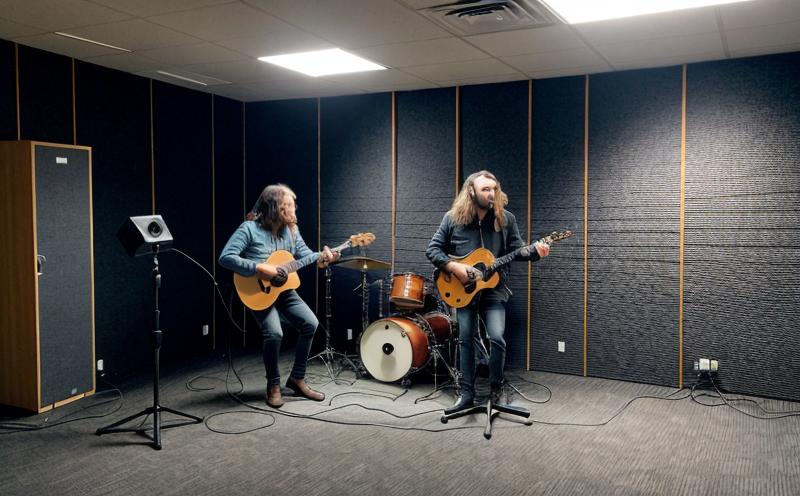ASTM E413 Sound Transmission Classification of HVAC Units
The ASTM E413 standard provides a method for determining the sound transmission loss (STC) of HVAC units, which is crucial for ensuring that these systems meet noise control requirements. The test aims to evaluate how effectively an HVAC unit can attenuate airborne sound from entering or leaving an enclosed space.
Sound transmission classification testing is typically conducted in specialized laboratories using double-door reverberant chambers equipped with appropriate baffles and absorbers to minimize background noise interference. Specimens, which could be entire HVAC units or their components like ducts and air handlers, are placed between the test chamber's two rooms. One room acts as a source of sound, while the other serves as the receiving area.
The testing procedure involves measuring sound pressure levels at specific frequency bands across both chambers before and after the specimen is installed. The difference in these measurements determines the STC value for each frequency band. These values are then plotted on an STC curve, which represents the performance of the HVAC unit against various noise control standards.
For effective testing, proper preparation of specimens is essential. This includes ensuring that all parts of the system are correctly assembled and free from defects that could affect sound transmission properties. Additionally, calibration of equipment and adherence to standard operating procedures guarantee accurate results.
Compliance with ASTM E413 ensures that HVAC systems perform optimally in reducing unwanted noise levels within buildings, enhancing occupant comfort and satisfaction. This not only meets regulatory requirements but also contributes positively towards sustainable building design principles by minimizing energy consumption associated with air conditioning units operating at lower efficiency due to excessive noise.
Understanding the implications of sound transmission classification is vital for quality managers responsible for ensuring product performance adheres to industry standards. Compliance officers benefit from knowing how well their products meet necessary criteria, allowing them to make informed decisions regarding design changes or material selections aimed at improving acoustic insulation properties.
R&D engineers find this service particularly useful when developing new HVAC models or modifying existing ones to enhance sound reduction capabilities without compromising on functionality or efficiency. By leveraging ASTM E413 testing early in the development cycle, they can identify potential issues and address them before proceeding further into production stages.
Industry Applications
- Auditoriums and theaters benefit from HVAC units that meet high STC ratings to ensure clear sound reproduction.
- Hospitals require quiet HVAC systems to maintain a peaceful environment conducive for healing.
- Offices need efficient noise control measures to reduce stress among employees and promote productivity.
- Data centers necessitate precise temperature and humidity controls, which must also incorporate effective sound insulation.
Eurolab Advantages
Eurolab offers comprehensive services for ASTM E413 sound transmission classification testing, ensuring accurate results that comply with international standards. Our state-of-the-art facilities equipped with advanced measurement instruments provide precise measurements of sound pressure levels across multiple frequency bands.
- We employ highly skilled technicians trained in conducting rigorous tests according to the latest versions of ASTM E413 and other relevant standards.
- Our laboratories are accredited by leading accreditation bodies, ensuring reliability and credibility of our test results.
- Eurolab provides detailed reports along with graphical representations such as STC curves, making it easier for clients to understand their system's performance relative to specified criteria.
- We offer fast turnaround times on our tests, enabling quicker feedback loops during product development cycles.
Use Cases and Application Examples
| Use Case | Description |
|---|---|
| Hospital HVAC Systems | Ensuring that the air conditioning units do not transmit unwanted noises into patient rooms, thereby maintaining a peaceful environment. |
| Offices and Call Centers | Minimizing noise levels to create better working conditions and reducing stress among employees. |
| Data Centers | Guaranteeing that the cooling systems operate quietly while maintaining optimal temperature and humidity levels, which is crucial for sensitive equipment like servers. |
| Auditoriums and Theaters | Providing clear sound reproduction by minimizing background noise transmitted from one room to another through HVAC units. |





